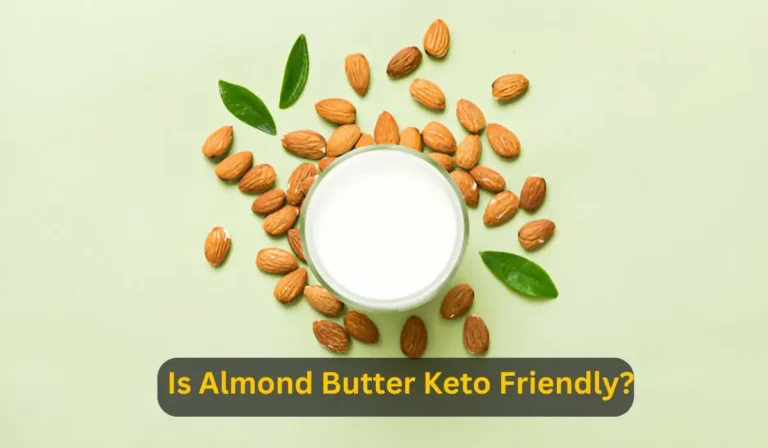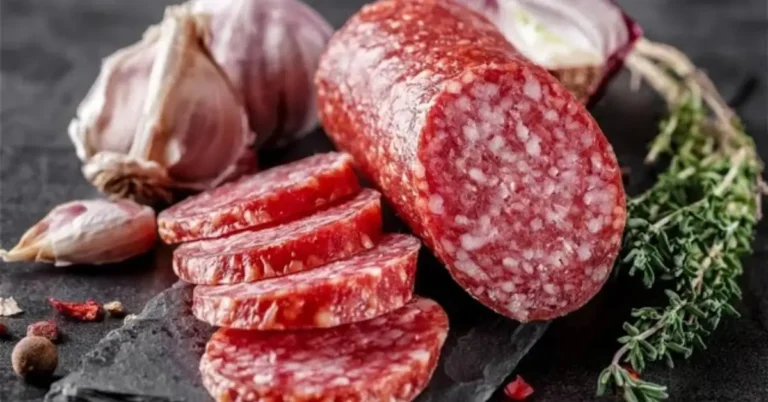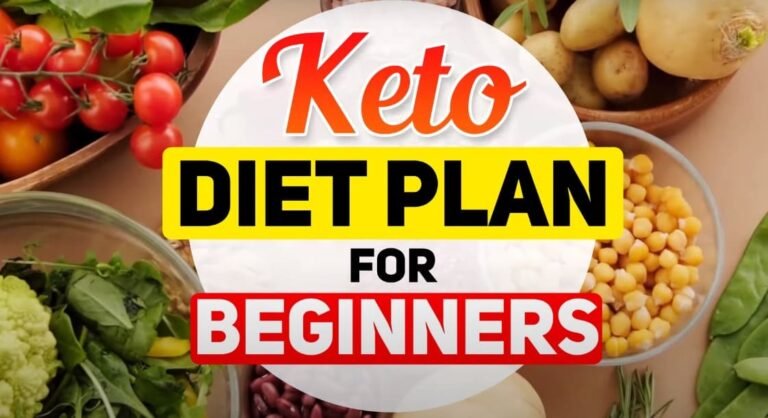Keto Diet for High Blood Pressure: Managing Hypertension Through Low-Carb Nutrition
The Keto diet has gained popularity for its potential benefits in weight loss and managing blood sugar levels. If you have high blood pressure, you might be wondering how this low-carb, high-fat diet could impact your health. Research suggests that the Keto diet may help reduce blood pressure by promoting weight loss and lowering inflammation.

Adjusting your eating habits can seem overwhelming, especially when considering how they affect your heart health. It’s important to understand both the benefits and potential risks associated with the Keto diet. By being well-informed, you can make choices that support your overall well-being while managing your blood pressure effectively.
Key Takeaways
- The Keto diet focuses on low carbs and high fats to help manage weight.
- It may lower blood pressure by reducing inflammation and helping with weight loss.
- It’s essential to monitor your health and consult with a professional before starting the diet.
Understanding the Keto Diet

The Keto diet focuses on low carbohydrate intake and high-fat consumption. This method promotes a metabolic state known as ketosis, which can help with weight loss and may benefit your blood pressure. Understanding the core principles and variations of the Keto diet is essential for effective implementation.
Principles of Ketosis
Ketosis is a metabolic state where your body shifts from using carbohydrates to using fats for energy. When you consume fewer carbs, your insulin levels drop, prompting the body to break down stored fat into molecules called ketones.
In ketosis, these ketones become the primary source of energy. This process can lead to weight loss and improved blood sugar levels, which may help lower high blood pressure. Many people experience increased energy and reduced hunger while in this state.
Keto Diet Basics
The standard Keto diet typically consists of about 70-75% fats, 20-25% protein, and only 5-10% carbohydrates. This breakdown helps your body enter ketosis more effectively. Foods often emphasized in this diet include healthy fats like avocados, olive oil, and nuts, along with moderate amounts of protein such as meat and fish.
Carbohydrate sources are limited to leafy greens, low-carb vegetables, and some berries. It’s important to focus on whole foods and avoid processed items to maximize health benefits and minimize any potential negative effects.
Types of Ketogenic Diets
There are several variations of the Keto diet, each tailored to different needs:
- Standard Ketogenic Diet (SKD): This is the most common type, emphasizing a high-fat, low-carb, and moderate-protein approach.
- Targeted Ketogenic Diet (TKD): This allows for additional carbs around workouts for those who are physically active.
- Cyclical Ketogenic Diet (CKD): This involves periods of higher carb intake, often used by athletes or those looking for more flexibility.
- High-Protein Ketogenic Diet: Similar to the SKD, but with increased protein intake, which could support muscle maintenance.
Each type has unique benefits and may suit different lifestyles and health goals, including managing high blood pressure.
Keto Diet and Blood Pressure

The relationship between the keto diet and blood pressure is important for those managing hypertension. This section covers the basics of blood pressure, the effects of the keto diet, and relevant research findings.
Blood Pressure Basics
Blood pressure measures the force of blood against your artery walls. It consists of two numbers: systolic and diastolic. Systolic pressure is the first number, indicating pressure during heartbeats. Diastolic pressure is the second number, representing pressure when the heart rests between beats.
Normal blood pressure is typically around 120/80 mmHg. High blood pressure, or hypertension, can lead to serious health issues like heart disease and stroke. Lifestyle factors, including diet, play a crucial role in managing blood pressure levels.
Effects of Keto on Blood Pressure
The keto diet emphasizes low carbohydrate intake, which can help lower insulin levels. Lower insulin may decrease sodium retention in your body, leading to reduced blood volume and lower blood pressure.
Many followers of the keto diet report a drop in their blood pressure over time. This diet encourages the consumption of healthy fats, proteins, and non-starchy vegetables. Foods such as avocados and nuts are beneficial, while processed carbohydrates are avoided.
Some individuals on blood pressure medication may experience lower readings due to the diet’s effects. It’s essential to consult a healthcare provider before making dietary changes, especially if you’re taking medications.
Research Findings
Several studies have examined the keto diet’s impact on blood pressure. One study showed that participants on a Mediterranean-style keto diet lowered their systolic pressure from 126 to 109 mmHg after 12 weeks. This suggests a significant relationship between the keto diet and blood pressure management.
Another study compared the keto diet with the DASH diet, known for its effectiveness in reducing hypertension. The findings indicated that the keto diet was more effective at lowering blood pressure and improving blood sugar control.
Research shows that a low-carb diet may also decrease the risk of high blood pressure. As you consider the keto diet for blood pressure management, staying informed about these findings can guide your choices.
Implementing Keto for Hypertension
When considering the keto diet for managing high blood pressure, it’s essential to approach the plan methodically. This involves getting started on the right foot, consistently monitoring your blood pressure, and adjusting your diet as needed for optimal results.
Getting Started
Begin your keto journey by understanding the basic principles of the ketogenic diet. Focus on high-fat foods while limiting carbohydrate intake to around 20-50 grams per day. Emphasize healthy fats like avocados, olive oil, and nuts. Choose low-carb vegetables such as leafy greens, broccoli, and zucchini.
Before making dietary changes, consult with your healthcare provider, especially if you’re on blood pressure medication. This helps to prevent any potential interactions or complications.
Create a meal plan that aligns with the keto diet while considering your personal taste preferences. This can help you remain committed and enjoy your meals. Prepare to review your food labels to ensure proper macronutrient ratios are met.
Monitoring Your Blood Pressure
Regularly check your blood pressure to gauge how the keto diet is affecting your health. Using a reliable home blood pressure monitor can provide accurate readings. Record your measurements daily at the same time to identify patterns.
Be mindful of how you feel throughout this process. Symptoms like dizziness or fatigue may indicate blood pressure changes. If you experience significant drops in your readings, consult your doctor to discuss adjusting your medication.
Keep a journal of your readings alongside your diet. This information can be beneficial during checkups with your healthcare provider. Tracking your progress will help you see improvements and maintain motivation.
Adjusting Your Keto Plan
As you assimilate into the keto lifestyle, be prepared to adjust your meal plan based on your body’s feedback. If your blood pressure drops too low, consider increasing your carbohydrate intake gradually. Introduce nutrient-rich carbohydrates like berries or sweet potatoes to maintain balance.
At times, you may find that certain foods affect your blood pressure more than others. Pay attention to how different foods impact your readings. Adjust your diet accordingly to find the right balance for your health.
Stay informed about new research regarding keto and hypertension. This will help you make adjustments based on the latest findings. Always prioritize your health and safety by consulting a healthcare professional when needed.
Nutritional Considerations
When following a keto diet for high blood pressure, it’s important to focus on what you eat and drink. Selecting the right foods can help manage your blood pressure while supporting your overall health. Consider the following key areas: keto-friendly foods, foods to avoid, and managing electrolytes and hydration.
Keto-Friendly Foods
Incorporating the right foods into your diet is crucial. Focus on high-fat, low-carb options that nourish your body.
Include:
- Healthy fats: Olive oil, coconut oil, and avocado oil are great choices.
- Proteins: Lean meats, fish, eggs, and full-fat dairy can provide essential nutrients.
- Low-carb vegetables: Spinach, kale, broccoli, and cauliflower are high in fiber and low in carbs.
- Nuts and seeds: Almonds, walnuts, and chia seeds offer healthy fats and protein.
These options support the ketogenic approach and can aid in lowering blood pressure by promoting weight loss and improving heart health.
Foods to Avoid
Certain foods can negatively impact your blood pressure and overall health while on a keto diet.
Avoid:
- Sugar: Refined sugars and sugary snacks should be eliminated.
- Grains: Bread, pasta, and rice are high in carbohydrates.
- Processed foods: Many packaged foods contain hidden sugars and unhealthy fats.
- High-sodium items: Avoid excessive salt found in fast food and certain snacks.
Steering clear of these foods helps maintain a state of ketosis, allows better blood pressure management, and supports long-term heart health.
Managing Electrolytes and Hydration
Proper hydration and electrolyte balance are key components of a keto diet, especially for blood pressure management.
Focus on:
- Staying hydrated: Drink plenty of water throughout the day.
- Electrolyte sources: Include potassium-rich foods like avocados and leafy greens. Magnesium can be found in nuts and seeds, while sodium should be monitored through added salts.
- Supplements: Consider electrolyte supplements if needed, especially during the transition to a keto diet.
Maintaining proper hydration and electrolyte levels can help prevent symptoms like fatigue and dizziness, while also supporting stable blood pressure.
Potential Risks and Side Effects
When considering the keto diet, it is important to be aware of specific risks and side effects that may arise. Understanding these issues can help you make informed decisions about your health.
Common Concerns on Keto
One of the most talked-about concerns is the keto flu. As your body adjusts to a low-carb intake, you may experience symptoms like fatigue, headache, and irritability. These usually last about a week.
Another issue to consider is nutrient deficiency. Limiting carbs can lead to a lack of essential vitamins and minerals, especially if you do not consume a variety of foods. Incorporate vegetables and supplements to help mitigate this risk.
Some people may also notice a change in cholesterol levels. While many report improved cholesterol, some may experience increased LDL cholesterol. It is vital to monitor your levels regularly.
Additionally, constipation is common due to lower fiber intake. Increase the consumption of fiber-rich foods or consider supplements like psyllium husk.
When to Consult a Professional
You should consult a healthcare provider if you have pre-existing health conditions like diabetes or heart disease before starting the keto diet. Tailoring the diet to your individual needs is crucial for safety.
If you experience severe side effects, such as persistent nausea, vomiting, or dehydration, seek medical advice promptly. These could be signs of more serious complications.
Monitoring your blood pressure is essential. If you notice significantly low blood pressure, fatigue, or dizziness, it is important to discuss these symptoms with your doctor. They can help adjust your diet or medication as needed.
Regular check-ins with your healthcare professional can provide support and help address any concerns you may have while following the keto diet.
FAQS About Keto Diet for High Blood Pressure
This section addresses common questions about the ketogenic diet and its effects on high blood pressure. You will find specific details about how the diet influences blood pressure, dietary recommendations, potential risks, and effects on cholesterol levels.
How can the ketogenic diet influence blood pressure levels?
The ketogenic diet can help lower blood pressure in some individuals. The reduction in carbohydrate intake can lead to weight loss and improved insulin sensitivity, both of which may contribute to lower blood pressure readings.
What dietary modifications are recommended for individuals with high blood pressure adopting a ketogenic diet?
When following a ketogenic diet, focus on incorporating healthy fats such as avocados, olive oil, and nuts. You should also aim to include plenty of leafy greens and vegetables that are low in carbohydrates, which can help manage blood pressure.
Are there any risks associated with combining keto diet and high blood pressure medications?
Yes, combining a ketogenic diet with blood pressure medications can pose risks. As you lose weight and see changes in blood pressure, you may need adjustments to your medications. Always consult your healthcare provider before making significant dietary changes.
What are the potential effects of a ketogenic diet on cholesterol levels for hypertensive patients?
While the ketogenic diet may increase levels of LDL cholesterol in some individuals, it can also raise HDL cholesterol, the “good” cholesterol. The effects can vary from person to person, so it’s important to monitor your cholesterol levels regularly.
What type of breakfast is considered beneficial for individuals with high blood pressure on a keto diet?
A beneficial breakfast for those on a keto diet might include scrambled eggs cooked in olive oil with spinach. Adding a side of avocado can provide healthy fats and nutrients that support heart health.
How rapidly can one expect to see changes in blood pressure after starting a ketogenic diet?
You may begin to notice changes in blood pressure within a few weeks of starting the ketogenic diet. However, individual results can vary based on factors such as initial health status and adherence to the diet.






